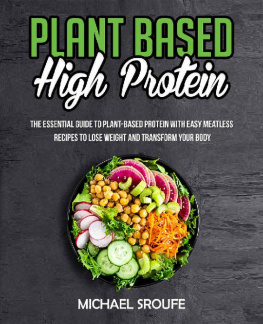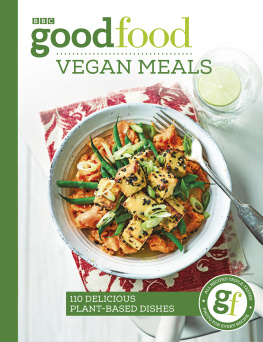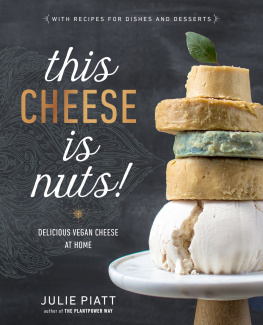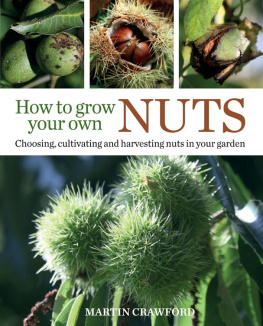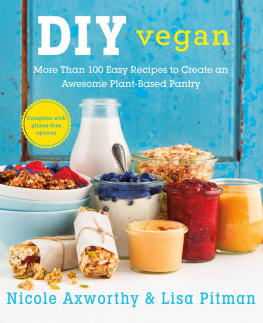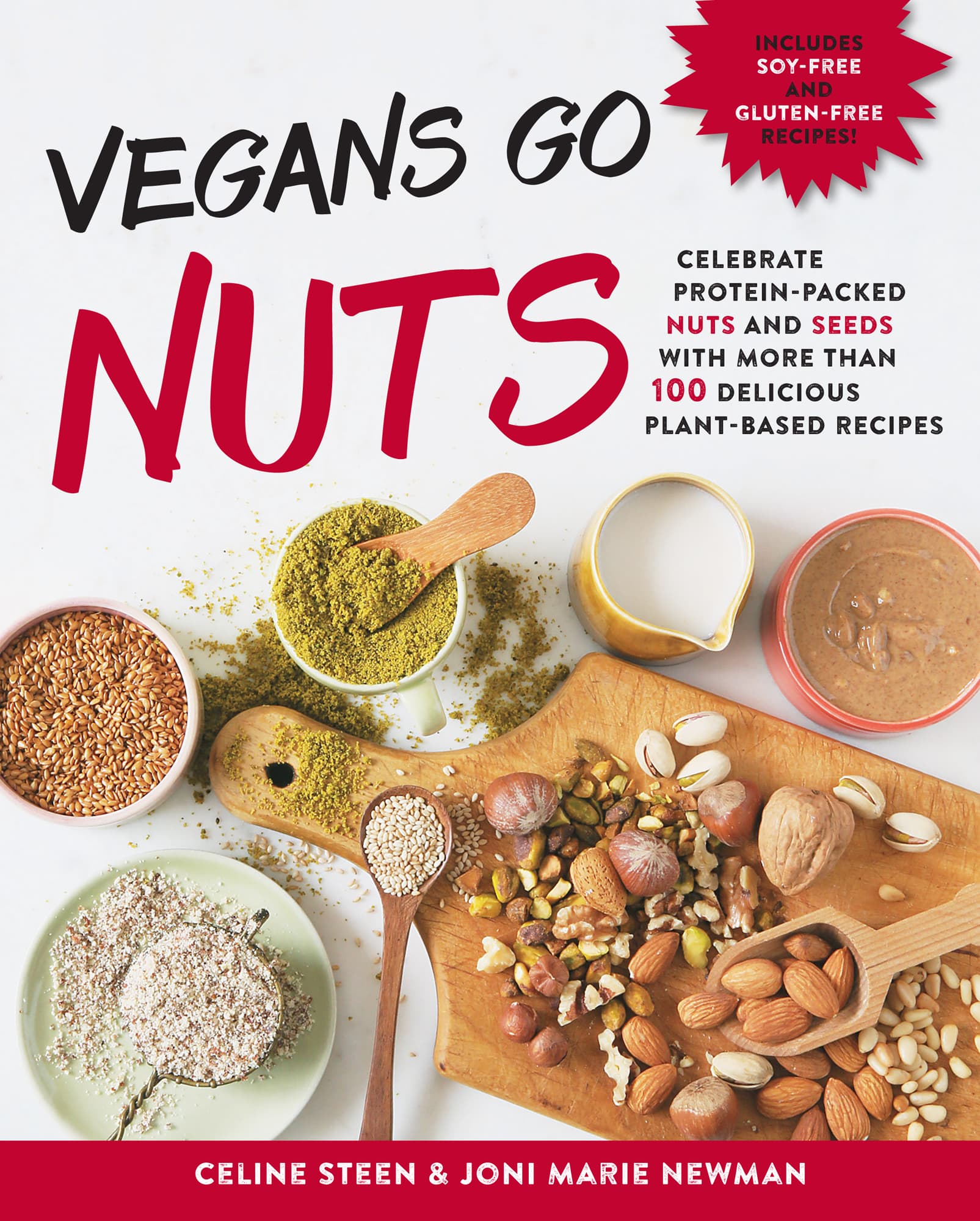VEGANS GO
NUTS
CELEBRATE PROTEIN-PACKED NUTS AND SEEDS WITH MORE THAN 100 DELICIOUS PLANT-BASED RECIPES
CELINE STEEN & JONI MARIE NEWMAN


2016 Quarto Publishing Group USA Inc.
Text 2016 Celine Steen and Joni Marie Newman
Photography 2016 Quarto Publishing Group USA Inc.
First published in the United States of America in 2016 by
Fair Winds Press, an imprint of
Quarto Publishing Group USA Inc.
100 Cummings Center
Suite 406-L
Beverly, Massachusetts 01915-6101
Telephone: (978) 282-9590
Fax: (978) 283-2742
QuartoKnows.com
Visit our blogs at QuartoKnows.com
All rights reserved. No part of this book may be reproduced or utilized, in any form or by any means, electronic or mechanical, without prior permission in writing from the publisher.
Digital edition published in 2016
Digital edition: 978-1-63159-170-9
Softcover edition: 978-1-59233-725-5
Library of Congress Cataloging-in-Publication Data available
Book and Cover Design: Megan Jones Design
Cover Image: Celine Steen
Page Layout: Megan Jones Design
Photography: Celine Steen (www.celinesteen.com)
The information in this book is for educational purposes only. It is not intended to replace the advice of a physician or medical practitioner. Please see your health care provider before beginning any new health program.

In loving memory of Betsy Gammons.
CONTENTS
Guide
IN THE KITCHEN WITH NUTS AND SEEDS
Nuts and seeds are some of the worlds most perfect foods! These little nutrition-packed nuggets of energy are as important a source of food for people around the world today as they have been for centuries.
Thanks to the prevalence of plant-based diets and a growing focus on health, nuts are more popular than ever. They are rich in protein, vitamins, minerals, and essential unsaturated and monounsaturated fats. Seeds are no slouches either, with a high protein content, B vitamins, minerals, essential unsaturated and monounsaturated fats, and dietary fibers.
Two long-term Harvard studies followed 120,000 participants over thirty years. What did they find? We found that people who ate nuts every day lived longer, healthier lives than people who didnt eat nuts, said study coauthor Dr. Frank Hu, professor of nutrition and epidemiology at the Harvard School of Public Health.
Many people think nuts are fattening due to their high fat and calorie content. The Harvard studies also found that those who ate nuts daily were less likely to gain weight because nuts are high in protein and fiber, leaving you feeling full and satisfied.
Needless to say, were not speaking of nuts from a can, roasted in oil, and loaded with salt, high-fructose corn syrup, and hard-to-pronounce (or digest!) ingredients. Nuts and seeds are most beneficial when enjoyed in their raw or dry-roasted, unsalted form. Aside from that, it doesnt even matter which type of nut you grabtheyre all healthy!
Nuts are extremely versatile and can be turned into flours (also known as meals), milks, and butters. They can also be combined with other ingredients to make cheeses, sauces, spreads, and more. Can any other food pull that off? We think not. Before we get to the recipes, lets dive in to all that nuts can do and explore how to best prepare them!
THE NUT AND SEED GLOSSARY
Whats the difference between a nut and a seed anyway? Technically, true nuts are fruits, but it gets a little tricky. All true nuts are also seeds, but not all seeds are nuts. And not all seeds come from fruits; some come from vegetables and others from flowers. Let us explain.
Botanically speaking, a true nut is a hard-shelled pod that contains both the fruit and seed of the plant. In this case, the fruit does not open to release the seed. Examples of true nuts include chestnuts, hazelnuts, and acorns.
A seed, on the other hand, is simply the embryonic plant surrounded by a food source and encased in a shell. Some seeds, such as sunflower seeds and pumpkin seeds, need the shell removed from the seed before eating. Others, such as poppy or sesame, do not require shell removal prior to consumption.
To add to the confusion, there is also a type of fruit known as a stone fruit or drupe. Drupes are composed of a fleshy exterior surrounding a shell that, in turn, contains a seed. Some common drupes are peaches, plums, olives, and cherries. Deep inside these fruits are seeds that we refer to as the pit. While we often throw away the pits, other drupes, such as walnuts, almonds, and pecans, are more valued for their tasty seeds than the fruit that surrounds it. Theyre therefore mistakenly referred to as nuts, when really they are seeds.
To avoid all of this confusion, the term culinary nuts refers to all nuts and seeds that are used for cooking or eating. For further clarification, we added the type (nut, seed, or drupe) next to the description of each in the list that follows.
As a general rule, culinary nuts are great sources of protein, fiber, vitamin E, B-complex vitamins, heart-healthy fats, and essential minerals such as copper and manganese. You need fat as part of your diet, and eating nuts helps ensure that your fat intake comes from healthy unsaturated fat rather than the harmful saturated fats found in meats, dairy, and other animal products.
Most nuts and seeds are pretty common and widely available. If your local grocer has a good bulk section, you will be served well. Its also easy to find online resources for quality bulk nuts and seeds. And, while youve most likely heard of and used most of whats on the list to follow, we did include a few exotic varieties and thought we would share a little bit about each type of nut and seed we will be using in the book.
You need fat as part of your diet, and eating nuts helps ensure that your fat intake comes from healthy unsaturated fat rather than the harmful saturated fats found in meats, dairy, and other animal products.
Almonds: drupe. A real favorite among vegans and snackers around the world, almonds provide heart-healthy protein, B vitamins, calcium, potassium, iron, fiber, mono- and polyunsaturated fats. Almonds are used in both sweet and savory dishes from almond milk to almond butter, marzipan, and vegan cheese. You can find them roasted, salted, smoked, sliced, slivered, blanched, pressed into oil, or ground into flour. Theres not a whole lot this nut cant do! We use raw, whole almonds the most. We also use blanched slivered or sliced almonds in this book, and smoked almonds are a favorite for snacking. In the United States most almonds are pasteurized to help prevent salmonella contamination. The Food and Drug Administration (FDA) permits companies to label these almonds as raw provided that their composition does not fundamentally change when they are pasteurized.


